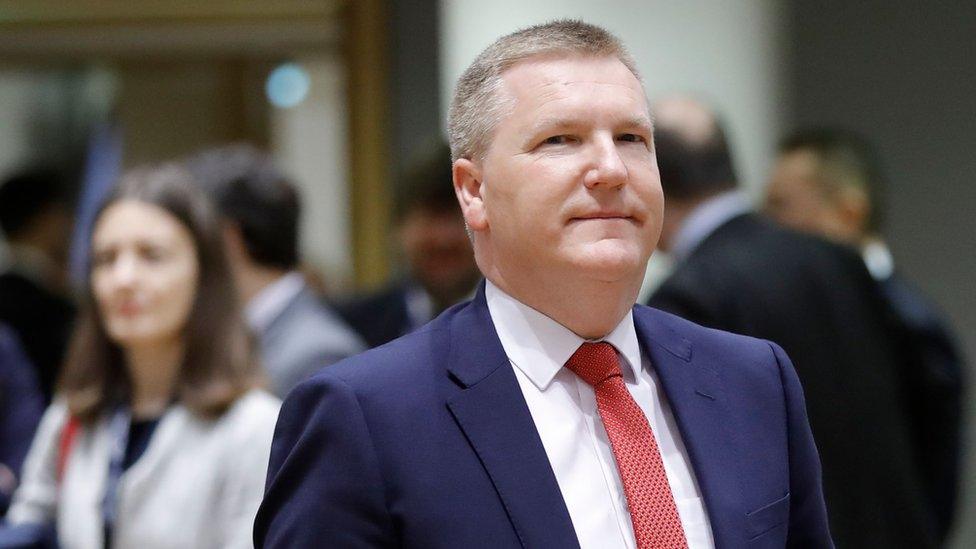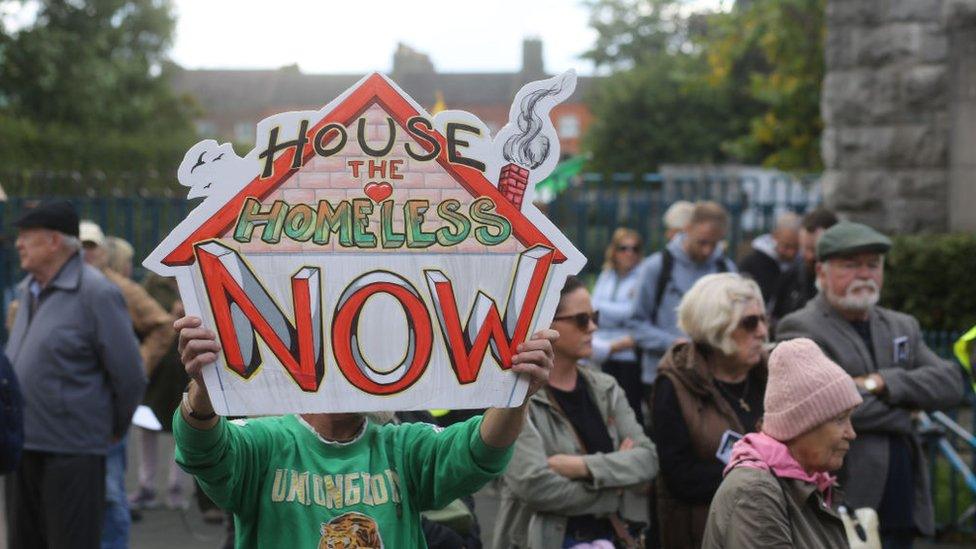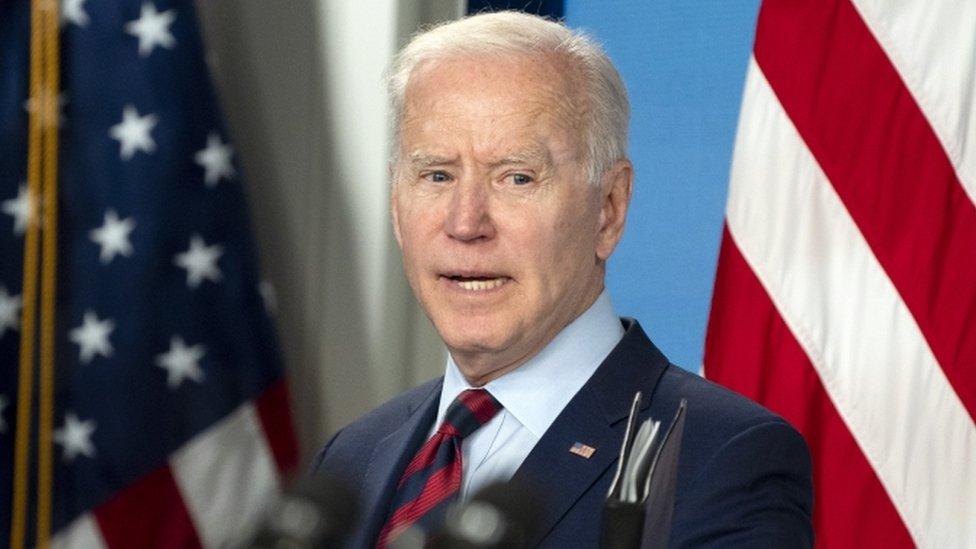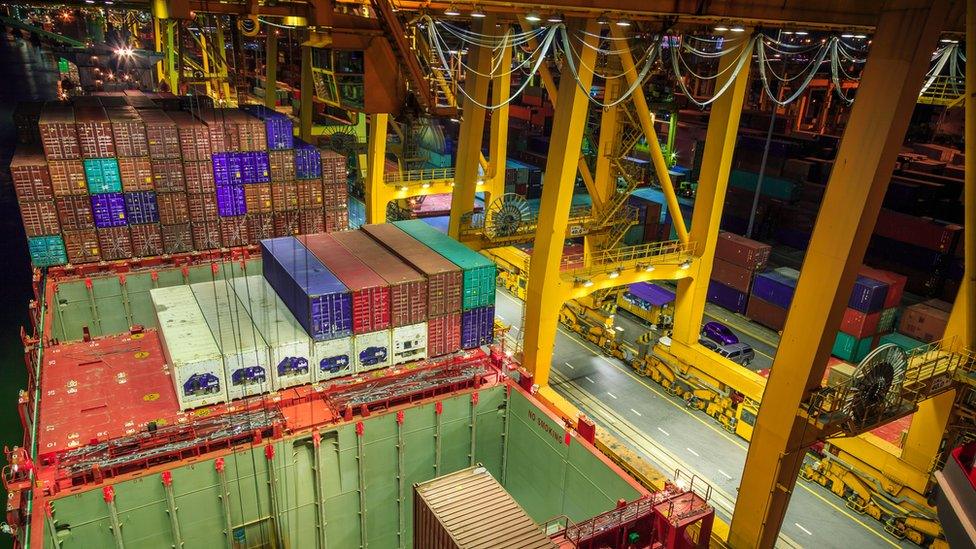How the Republic of Ireland reaped an astonishing tax bounty
- Published

The Republic of Ireland raised €22.6bn in corporation tax in 2022
In April 2021 comments by the US Treasury secretary prompted nervousness among Irish politicians and officials.
It was clear the US was preparing to reinvigorate international efforts to reform business taxation.
Janet Yellen wanted to end "the global race to the bottom" where large, mostly US firms organised operations to sharply reduce corporation tax bills.
A long-standing part of the Republic of Ireland's economic strategy has been to attract tax-sensitive foreign investment.
Its headline corporation tax rate of 12.5% is among the lowest in the developed world.
Work on those global tax reforms has not been completed and Ireland may yet face a reckoning.
But for now the country is reaping an astonishing bounty.
That was made clear when Finance Minister Michael McGrath delivered his spring economic forecast last week.

Michael McGrath is in a position that many finance ministers around the world would envy
He was in the happy position of being able to predict a budget surplus of €10bn (£8.85bn) this year or 3.5% of national income.
In other words the state will collect €10bn more in taxes than it spends.
That is not expected to be a one-off; the annual surplus is forecast to be more than €20bn (£17.7bn) by 2026.
Where has the money come from?
Ireland's economy has recovered strongly from the Covid-19 pandemic so more taxes like VAT are being collected.
But something else is going on. That something is the corporation tax coming from multinational companies.
Last year Ireland raised €22.6bn (£20bn) in corporation tax, 182% more than the €8bn (£7.08bn) it took in just five years ago.
Of that €22.6bn Mr McGrath has designated about €12bn (£10.62bn) as a "windfall" from multinationals, meaning it has been derived from a particular set of circumstances that won't last forever.
Ireland has long featured in the tax planning of multinational companies, often as a conduit for shifting money around.
But in the middle of the last decade some of the world's biggest companies began to reorganise their affairs in a way which meant they would pay a lot more tax in Ireland.
Ironically this was partially a response to the pressure on big companies to clean up their act on tax.
The principle was that companies should declare profits in locations where they have substantial real operations or activities rather than just a low-tax location where they happen to have an office with few employees.

Multinational companies such as Apple employ thousands of people in the Republic of Ireland
Ireland fitted the bill - it was a tax-friendly jurisdiction but companies like Apple had long had real operations in the country, employing thousands of people.
What came next was the legal relocation of intellectual property (IP) assets to Ireland - the most valuable profit-earning parts of these businesses.
Apple's shift of IP assets in 2015 is widely believed to have been responsible for a wild swing in the country's GDP that year.
Finance journalist Thomas Hubert has analysed company filings to work out how much tax Apple has paid in Ireland since that IP move.
In a recent piece for The Currency news site, external he estimated that the company paid Irish corporation tax "in the high €3bn (£2.65bn) to €4bn (£3.54bn) bracket" in 2022 alone.
There are probably other factors at play, including the expiration of certain tax breaks but commercial confidentiality means there is not really a full and easily understood explanation of precisely what is going on.
So what to spend it on?
Prof Alan Barrett from Dublin's Economic and Social Research Institute said the difficulty in defining how much of this tax is a temporary windfall means there is caution about how the money should be spent.
"The government and all commentators recognise that because we can't explain why so much extra revenue is coming in, that revenue could disappear very quickly," he said.
"The discussion at the moment is all around the notion that we have to be really careful not to start making long term day-to-day spending commitments based on this revenue."
He said there was an awareness of the danger of repeating the mistakes at the end of the Celtic Tiger period when spending plans were dependent on property-related tax revenues which collapsed along with the property market.

Rental prices and the sale value of homes have rocketed amid the Irish housing crisis
One obvious way in which the money could be spent is on a huge programme of social housing and related infrastructure.
Ireland is in the grip of a housing crisis which the governing coalition has struggled to get a hold of and is being punished in the polls as a result.
But Prof Barnett said that turning the windfall into houses was not straightforward.
"The difficulty is that the economy is essentially at full employment so there just aren't the bodies available to do things like building housing or other forms of infrastructure," he said.
For that reason thoughts are turning towards some form of sovereign wealth fund.
In the conclusion to his forecast, Mr McGrath said that "the costs of demographic change are now very clearly on the horizon" and that over the course of this decade it will cost up to €8bn a year more simply to deliver existing levels of public service.
For that reason he will soon be proposing a way to "pre-fund a portion of these costs via a longer-term public savings vehicle".
But don't expect the entire windfall to be squirrelled away.
Ireland's next general election must be held by March 2025 and a couple of giveaway budgets may be the coalition's best shot at retaining power.
Related topics
- Published28 November 2022

- Published8 April 2021

- Published13 July 2016
